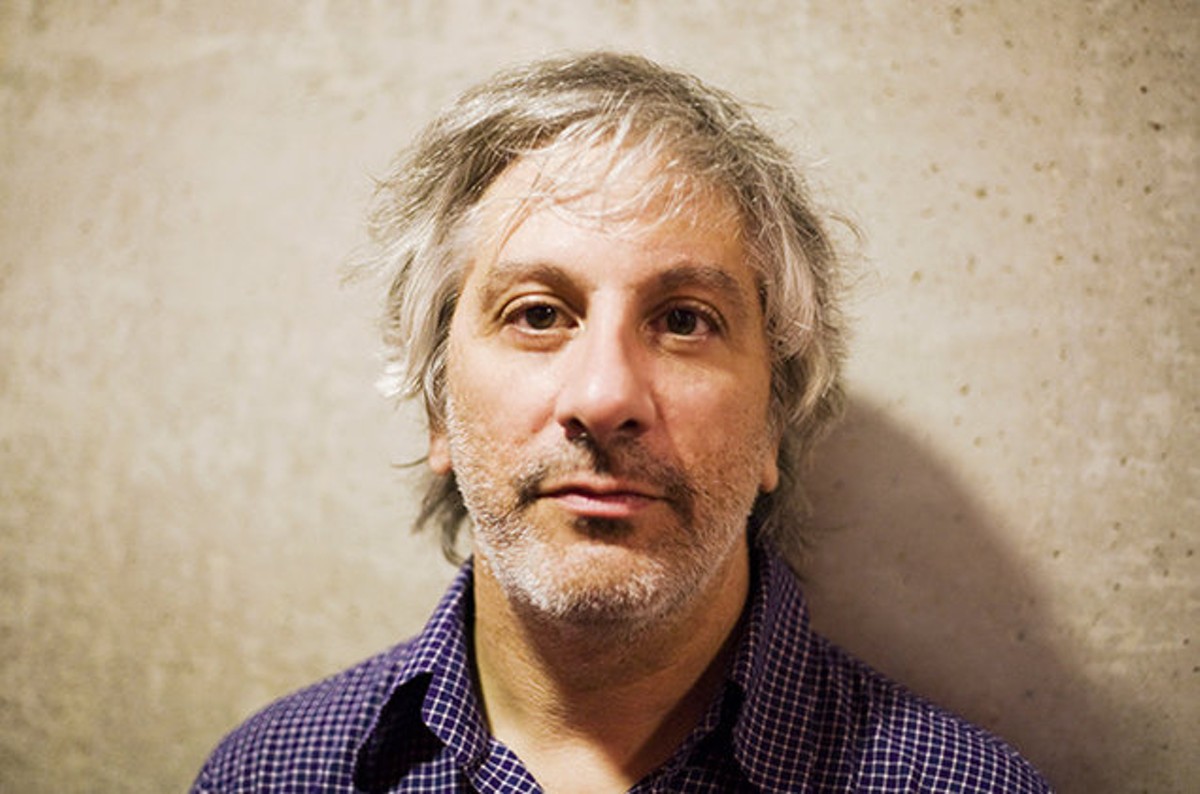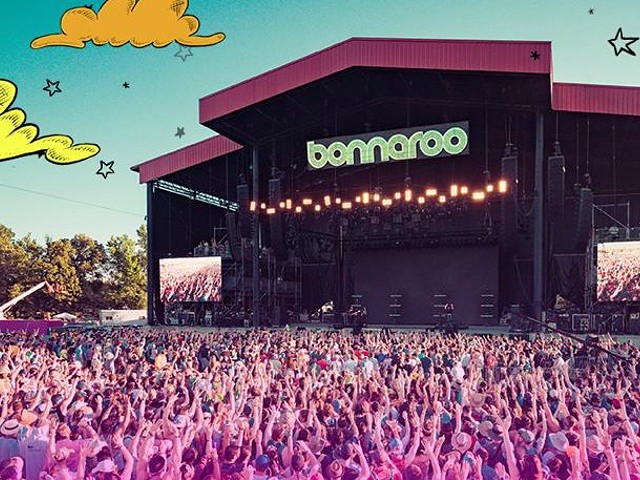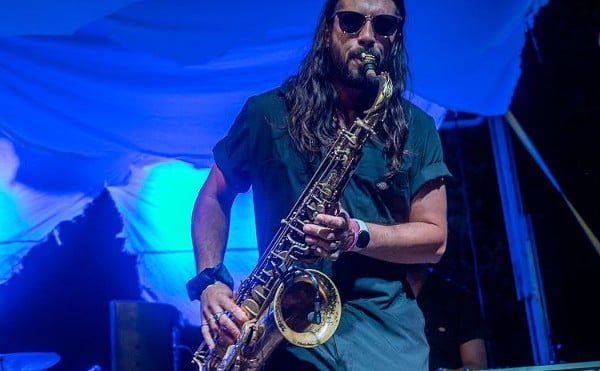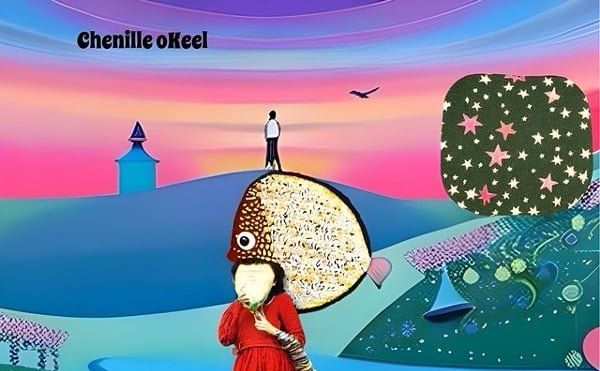Lee Ranaldo is a force in the indie scene, primarily known for his work with the seminal act Sonic Youth. Ranaldo, a pioneer on the guitar, has an innovative approach, influential to acts including Nirvana, Slint, Pavement, Fugazi, Mogwai and others. With a robust musical output, unhindered by the demise of Sonic Youth in 2011, Ranaldo has released three solo records and performs with the group Text To Light, which musically interprets the work of experimental filmmaker Stan Brakhage. You can catch Ranaldo performing this Tuesday at Dreamland alongside Forecastle alum Steve Gunn and Meg Baird.
LEO: What got you into music initially? Was it part of your household? Was your family into it? What drew you to guitar? Ranaldo: My mother was a pianist, and there was always music in my house, many extended musicians in my family and lots of singing at home. I did a lot of visual art and a lot of writing in my youth, as well, but, in spite of being occupied by all of these activities, it never occurred to me until halfway through university that one could actually be an artist — it just didn’t seem an option to a working-class kid like me. I was young — but not too young — as the rock-’n’-roll music of the ‘60s took over the world. Somehow, my father brought home the very earliest records by The Beatles, so I grew up knowing their music in its time — I did not come to it later — and for this I feel quite lucky. Although young, I was able to witness that cultural explosion and feel a part of it.
As soon as I was able, I got myself a real guitar and starting asking friends to show me some chords. I had been shown some alternative tunings in my teenage years by an older cousin, and really since then I never looked back. Playing an open-tuned guitar sounds so good, and so different from everybody that’s playing in standard tuning. So, I was experimenting with tunings early on, inspired by Joni Mitchell or John Fahey or Rev. Gary Davis — people like that. Later I discovered that the Velvet Underground were using strange open tunings, and later still I met Glenn Branca and Rhys Chatham in New York City, both of whom were using very specific tunings to quite unique ends.
So, when Sonic Youth began, I had a great deal of experience with open tunings, and, by then, Thurston had also played with both Glenn and Rhys, as well. We only had a couple guitars when we started, and mostly they were cheap instruments that didn’t hold standard tuning so well — they’d go out of tune too easily — so we started creating our own tunings and just kept going from there and never looked back. At this point, I haven’t seriously played a standard tuned guitar in decades!
How did you get into punk, indie, etc.? How has the indie scene impacted your life? How has it informed the way you conduct yourself (business, etc.), if at all? We always said, in the early days of Sonic Youth, that the music we were making couldn't have been made anywhere else — that we were inspired by the volume and chaos and noise of the city when creating our music. And that's true. The volume level is always on high, people screaming in the streets at all hours, sirens wailing in the night, crazy people on the corner, etc.
So, the city was a very powerful influence. When Thurston, Kim and I all came to New York City — late ‘70s, early ‘80s — the city was very hermetic, and a very powerful culture was brewing in the worlds of music and art, which interacted with each other. You had many artists working in various fields — painters forming bands, guitar players making sculptures, etc. It was a very high time when much great work was made. Many people were willing to experiment, try new things — and that was the character of the city which influenced us most. We wanted to become a part of that.
In spite of the art world’s rapid notoriety, there was something very insular about that time — things happening here then did not always translate outside the heady environment of the city. Certainly, no bands from that time imagined being able to make records — there were no indie companies back then. Glenn Branca’s was actually among the first around in New York City, alongside 99 Records. So, the sense of community was very strong, [but] there was nothing else — no touring anywhere or making records. There was just seeing each other in the clubs and exchanging ideas. It was a pretty special time, such as happens now and again in one place or another, whether Paris in the ‘20s or Seattle in the ‘90s. New York was that place in the late ‘70s/early ‘80s. The energy of what was going on in New York City at that time — partially inspired by the growing punk movement in London, Detroit, Los Angeles and other places — was what drew me back into music in a serious way. In a few short years, punk in the USA mutated into American hardcore, and we were picking up on that energy as well.
How did you come to work with Sonic Youth? I moved to New York City with a band called The Fluks, that I’d founded in Binghamton, New York, where I went to college. Once the punk movement hit, and we started hearing the sounds coming out of New York City, it was impossible to resist starting a band to join in the excitement. After school was done, the other members of The Fluks, and I moved to New York City where is where I first encountered Thurston — his band The Coachmen were following a similar path. We ended up playing some shows together and then, on Kim’s suggestion, Thurston and I started playing together and the three of us really forged Sonic Youth at that point, in 1981.
What was it like being in a band with two people in a relationship? When we were working together, there wasn’t much sense of Thurston and Kim’s relationship, actually — in the practice room it was just as likely that they’d be on opposite sides of any discussion as the reverse. Their romantic relationship didn’t really enter into the decision-making of the band, really — we each had one vote and worked to be in unanimous agreement on all decisions as much as possible. In our working relationship, we were really just four individuals… later five.
How do you look back on your time with Sonic Youth? What did you take away from your experience? Sonic Youth was a special group, the kind that doesn't happen every day. It was a group of four equal members, all working on the songs, writing the songs together… except lyrics. As democratic as we could make it. We were together for 30 years and had a host of interesting experiences — from the indie-rock world of the ‘80s to entering the more corporate big-time music business world in the ‘90s. Working alongside friends like Nirvana and Mudhoney, playing with Iggy Pop or Neil Young — some amazing stuff, especially when you figure in how difficult our music was — it wasn’t easily palatable or ever going to be mainstream, but we still survived and had a career, which roped in art and culture and the rock ’n’ roll we grew up on. We put out records that sold a fair amount, and records that were mostly bought by the cognoscenti. By the time the band came to a halt, I had been in it for more than half my life — the experiences we had together are too numerous to list here.
How did you hook up with your current band? How did The Dust come together? What about The Text of Light? My current band consists of two players in Spain — one being Raul Fernandez who produced my new album, plus Alan Licht from The Dust and a young woman from Brooklyn on drums. It’s been evolving to suit the needs of my new songs and, in some ways, coming out of the ashes of The Dust as the other guys in that band have been off doing different things at the moment. Right now, only Alan still remains in my orbit from The Dust. He and I also lead Text of Light, which is a loose improvising collective that work with films.
When you work with other players, do you operate as a collaborative, or are you the primary songwriter? Which do you prefer? When I’m working on my own records, which is most of the time lately, I am primary songwriter and director, but otherwise I work collaboratively in a number of projects, from Text of Light and Glacial (trio with Tony Buck and David Watson), or my film and music performances with my partner Leah Singer.
How does your artwork influence your music? Ever since I was quite young, my interests have been in music, visual art and literature, and I continue to work in all these areas, sometimes overlapping and other times discreetly. An artist’s life is about taking the media at hand — be it paint or sound or words — into something transformative. It’s not so much about the specific media as it is trying to find the message. I enjoy the crosstalk between the various disciplines, so sometimes words end up on the drawings, or ideas from the visual work will influence the performances or the songs.
When I arrived at college, I wasn’t sure what I was going to do yet, although music had been such a dominant focus in my life, it didn’t seem possible that I could have a career in music. In school, I gravitated to visual art, and that opened me up to so many things that are still of primary importance to me today. In those years, rock seemed bloated and less interesting, more commercial. When punk and new wave exploded on the scene, it was impossible to resist joining the movement, and suddenly music making was back in my life again — but filtered through my studies of contemporary art. When Sonic Youth started, we were drawing from the things we’d learned about modern art practice, and from films and film theory and from literature and comic books, etc. — we weren’t just kids coming out of a garage, but at that point informed by 20th-century art and music, from Stockhausen to Cage to The Beatles and so many other sources.
What should people expect at the show this week? How would you describe what you are currently doing to folks not in the know? It’s gonna be solo acoustic. I’ll still have an amp and some pedals, but it will be a stripped-down solo show. Steve Gunn, Meg Baird and I will all do solo acoustic sets. We’ve been talking about trying to do some stuff together, but we’ve just started out and not worked any collaborative stuff up yet. Steve and I are flip-flopping headliner position each night, and Meg is opening the shows. It seems to be a pretty good match — each of us presenting different aspects of acoustic guitar music. I’ve been wanting to do a tour like this for awhile — a group of acoustic musicians traveling together, playing songs. And this is the first realization of such an idea.
On my last record, Last Night On Earth, the band was a big part in creating the sound. We worked for quite awhile in the studio on the songs and the arrangements. It was really a band album in the true sense. On my new album, to be released in May 2017, Electric Trim, I worked closely with Barcelona producer Raul 'Refree' Fernandez. The two of us crafted the record over about a year of intermittent sessions in the studio. My band and other musicians — Nels Cline, Sharon Van Etten, Kid Millions — play on the record, but it's not a band record in the same sense that Last Night On Earth was. There is more production involved in this record — very different from getting a good sound and recording a band basically live in a room, which is what we did on Last Night On Earth. It has a lot of acoustic elements as well as lots of electric guitar. It’s a pretty good mix of the two. I’m really proud of it, I think it’s one of the best things I’ve ever done. It was a lot of hard work, but overall it was a blast to make and I think my collaboration with Raul will be ongoing.
So, my sets on the current tour are mostly about presenting these new songs — albeit in a more stripped-down format than the record. It’s very interesting to me to be able to play the songs in a simple solo fashion, close to how they were originally written. I like the idea that the songs are malleable and can be presented very intimately in a solo acoustic setting and then at another time presented in a more rock fashion in a club or big hall. The intimate aspect of playing solo acoustic for modest size audiences, in cool and often atypical rooms, is a large part of its appeal.
Who are some of your current musical heroes and why? My current musical heroes are mostly younger than me, folks like Steve and Meg or Haley Fohr or Will Toledo, who are making incredibly inspiring music without regard to the music business or anything like that. Creative souls putting out energy and ideas. That’s so cool to me.



![[Vlog] The Metal Grind With Athena Prychodko (4/30)](https://media1.leoweekly.com/leoweekly/imager/vlog-the-metal-grind-with-athena-prychodko-4-30/u/golden-s/16271931/image-1.jpg?cb=1714449156)


